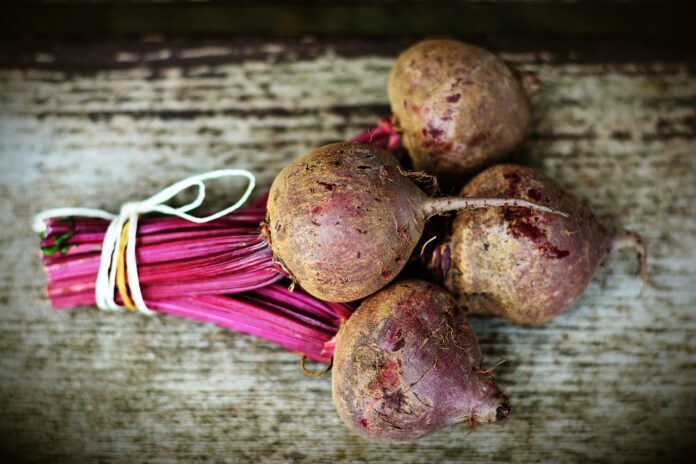The beet, or beetroot, is a root vegetable known for its deep purple-red color and earthy flavor. Scientifically named Beta vulgaris, beets are cultivated worldwide for their edible roots and leafy greens. The plant thrives in cool climates and is often grown in temperate regions.
Interesting Facts About Beet:
- Ancient History: Beets have been cultivated for over 2,000 years. Evidence suggests they were present in the Hanging Gardens of Babylon, one of the Seven Wonders of the Ancient World, and were highly regarded in ancient civilizations, including those of the Greeks and Romans
- Botanical Origins: Beets (Beta vulgaris) are part of the Caryophyllales family, which includes other plants like spinach. They originated from wild sea beets found along coastlines in the Mediterranean region
- Record-breaking sugar beet campaign: In 2024, British Sugar achieved one of its longest sugar beet campaigns in history. The campaign ran for 228 days, processing over 8 million tonnes of sugar beet across four factories, producing about 1.1 million tonnes of sugar. The processing factory in Wissington processed over 3.1 million tonnes, making it one of the largest campaigns for the region
- Sugar beet yield: A significant record was the ‘above-average’ crop yield achieved despite challenging weather conditions. In 2024, sugar beet crops yielded about 78 tonnes per hectare, marking a recovery from previous years’ frost-impacted yields
- Health Benefits: Beets are rich in key nutrients such as iron, folate, fiber, and antioxidants. They have been found to help lower blood pressure, improve heart health, reduce inflammation, and promote digestive health by aiding in detoxification
- Versatile Use: Beets were not only consumed but also used medicinally in ancient times. Greeks and Romans used them to treat various ailments like skin conditions, fevers, and digestive problems. Beetroot was even believed to help with improving sexual health, thanks to its aphrodisiac qualities
- Colorful Roots: The striking red color of beets comes from betalains, a pigment that has strong antioxidant properties. These antioxidants help combat free radicals in the body, offering various health benefits
- Variety of Colors: While red beets are the most common, other varieties include golden, striped, and white beets. Each variety has a slightly different flavor profile, with golden beets being sweeter and milder than their red counterparts
- Culinary Tradition: Beets are an essential ingredient in borscht, a famous soup that originates from Eastern Europe, particularly Ukraine and Russia. Borscht is made with beets, cabbage, and other vegetables, and it’s served hot or cold, depending on the region
- Aphrodisiac Reputation: The ancient Romans valued beets as an aphrodisiac, believing they could enhance romantic desire. This belief was tied to the beet’s rich red color and the nutrients thought to invigorate the body
- Athletic Performance: The high nitrate content in beetroot has been found to improve athletic performance by increasing blood flow to muscles, enhancing endurance, and reducing oxygen consumption during exercise
- Promotes Liver Health: Beets are packed with pectin, a type of soluble fiber that helps bind toxins and heavy metals in the liver, aiding in detoxification and promoting overall liver health
- Natural Dye: Beet juice is a powerful, natural dye. It has been used to color Easter eggs and even fabrics, offering an eco-friendly alternative to synthetic dyes. The vivid red hue from beet juice can stain anything it touches, so it is often used in DIY projects
- Beetroot Juice: Beetroot juice is widely consumed for its health benefits, such as improving circulation, boosting stamina, and lowering blood pressure. The nitrates in beet juice convert to nitric oxide in the body, which dilates blood vessels and improves circulation
- Nutritional Value: A single cup of cooked beets provides about 75 calories, making them a low-calorie yet nutrient-packed food. They are rich in vitamins and minerals like vitamin C, folate, and manganese, contributing to a healthy diet
- Space Travel: Beetroots were included in the diet of astronauts during space missions, including Apollo 18. The nutritious root vegetable was valued for its health benefits and ability to provide sustenance during long missions
